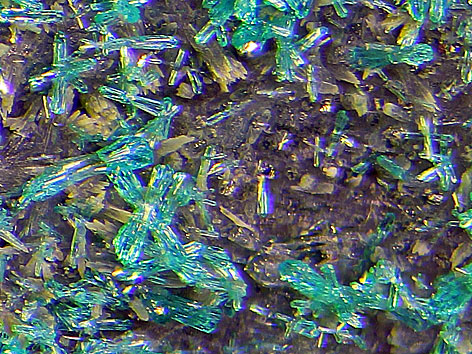
Dioptas xx
Altyn Tjube, Kasachensteppe, Province Karaganda, Kasachstan (TL)
Stufe: 9,5 x 6 cm

Dioptas xx
Altyn Tjube, Kasachensteppe, Province Karaganda, Kasachstan (TL)
Stufe: 3,6 x 3,5 cm

Dioptas xx
Tantara Mine, Shinkolobwe, Kambove Territorium, Haut-Katanga, DR Kongo
Stufe: 16 x 11 cm

Dioptas xx
Kapata, Bergbaurevier Kolwezi, Mutshatsha, Lualaba, DR Kongo
Stufe: 14,2 x 10,0 cm

Dioptas xx
Tsumeb Mine, Tsumeb, Region Oshikoto, Namibia
Stufe: 2,8 x 2,3 cm

Dioptas xx neben Quarz, Chrysokoll u. a.
Copiapo Provinz, Atacama Region, Chile
Stufe: 9 x 8 cm

Dioptas xx
Detail der oben rechts abgebildeten Stufe
Bildbreite: 2 mm